Hormones are messenger chemicals that travel in the blood between organs and tissues, regulating many processes. A hormone axis is a system that controls the amount of a hormone in the system. Too much or too little of a hormone can have significant consequences.
The Hypothalamus and Pituitary
The hypothalamus releases hormones that stimulate the pituitary gland. The pituitary gland has an anterior and posterior part.
The anterior pituitary gland releases:
- Thyroid-stimulating hormone (TSH)
- Adrenocorticotropic hormone (ACTH)
- Follicle-stimulating hormone (FSH) and luteinising hormone (LH)
- Growth hormone (GH)
- Prolactin
The posterior pituitary releases:
- Oxytocin
- Antidiuretic hormone (ADH)
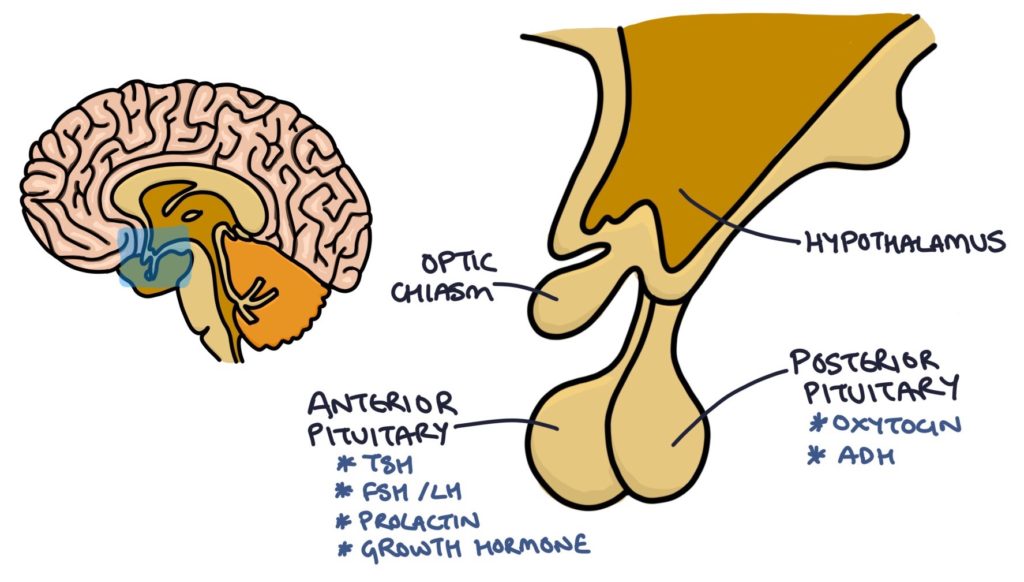
The Thyroid Axis
The hypothalamus releases thyrotropin-releasing hormone (TRH). TRH stimulates the anterior pituitary to release thyroid-stimulating hormone (TSH). TSH stimulates the thyroid gland to release triiodothyronine (T3) and thyroxine (T4).
The hypothalamus and anterior pituitary respond to T3 and T4 by suppressing the release of TRH and TSH, resulting in lower amounts of T3 and T4. The lower T3 and T4 offer less suppression of TRH and TSH, causing more of these hormones to be released, resulting in a rise of T3 and T4. This way, the thyroid hormone level is closely regulated to keep it within normal limits.
When the end hormone (e.g., T3 and T4) suppresses the release of the controlling hormones (e.g., TRH and TSH), this is called negative feedback.
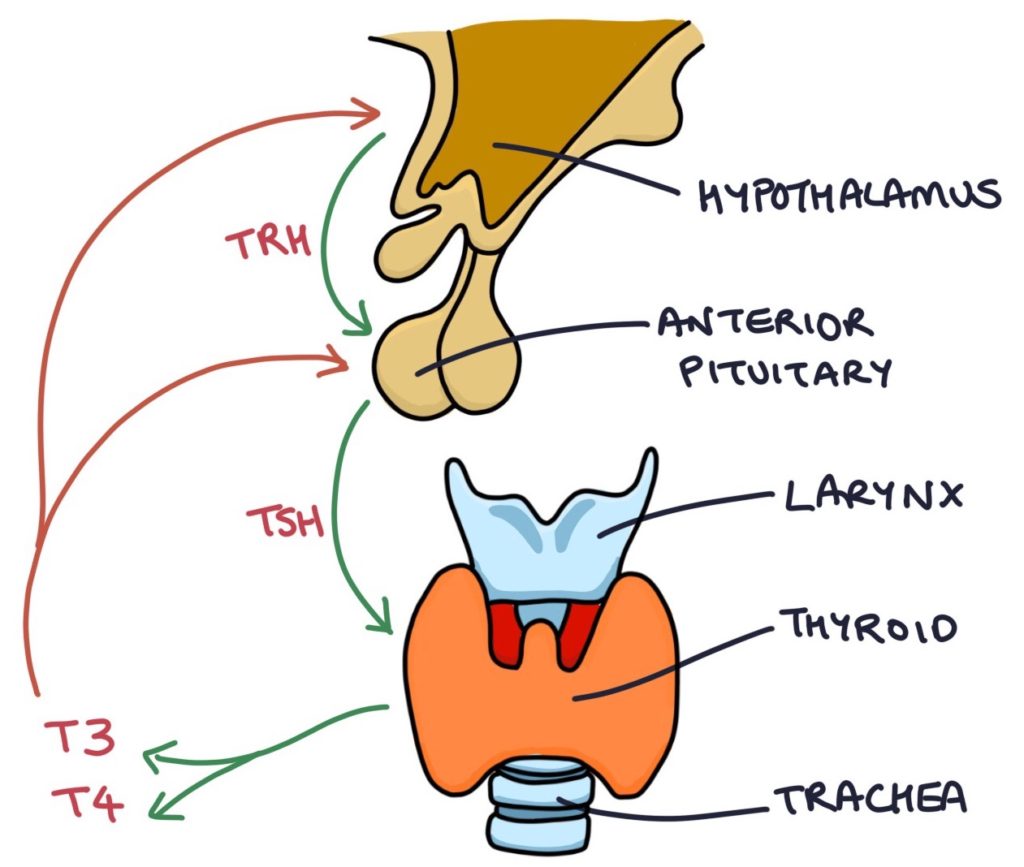
The Adrenal Axis
Cortisol is secreted by the two adrenal glands, which sit above each kidney. The hypothalamus controls the release of cortisol. Cortisol is released in pulses throughout the day and in response to a stressful stimulus. It is a “stress hormone”. It has diurnal variation, meaning it is high and low at different times of the day. Typically cortisol peaks in the early morning, triggering us to wake up and get going, and is at its lowest late in the evening, prompting us to relax and fall asleep.
The hypothalamus releases corticotropin-releasing hormone (CRH). CRH stimulates the anterior pituitary to release adrenocorticotropic hormone (ACTH). ACTH stimulates the adrenal glands to release cortisol.
The adrenal axis is also controlled by negative feedback. Cortisol is sensed by the hypothalamus and anterior pituitary, suppressing the release of CRH and ACTH. This results in lower amounts of cortisol. This way, cortisol is closely regulated to keep it within normal limits.
Cortisol has several actions within the body:
- Increases alertness
- Inhibits the immune system
- Inhibits bone formation
- Raises blood glucose
- Increases metabolism
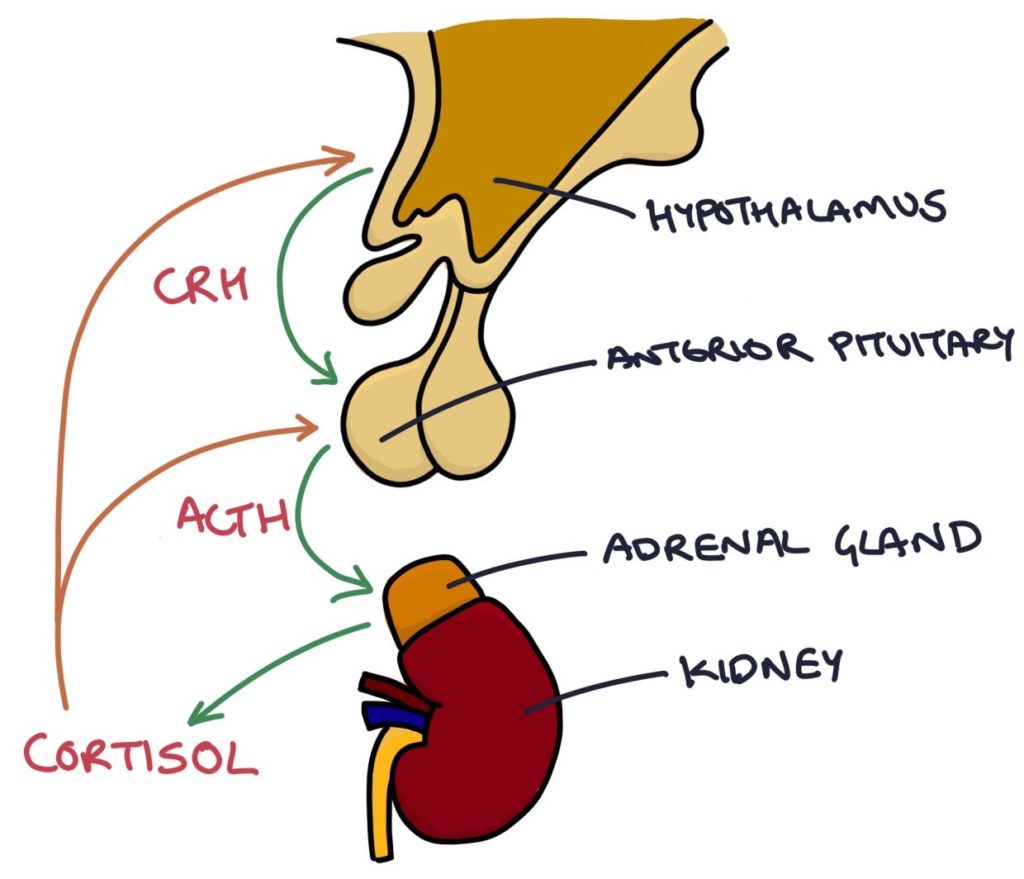
The Growth Hormone Axis
The hypothalamus produces growth hormone-releasing hormone (GHRH). GHRH stimulates the anterior pituitary to release growth hormone (GH). Growth hormone stimulates the release of insulin-like growth factor 1 (IGF-1) from the liver.
Through this mechanism, growth hormone works directly and indirectly on almost all cells and has many functions. Most importantly, growth hormone:
- Stimulates muscle growth
- Increases bone density and strength
- Stimulates cell regeneration and reproduction
- Stimulates growth of internal organs
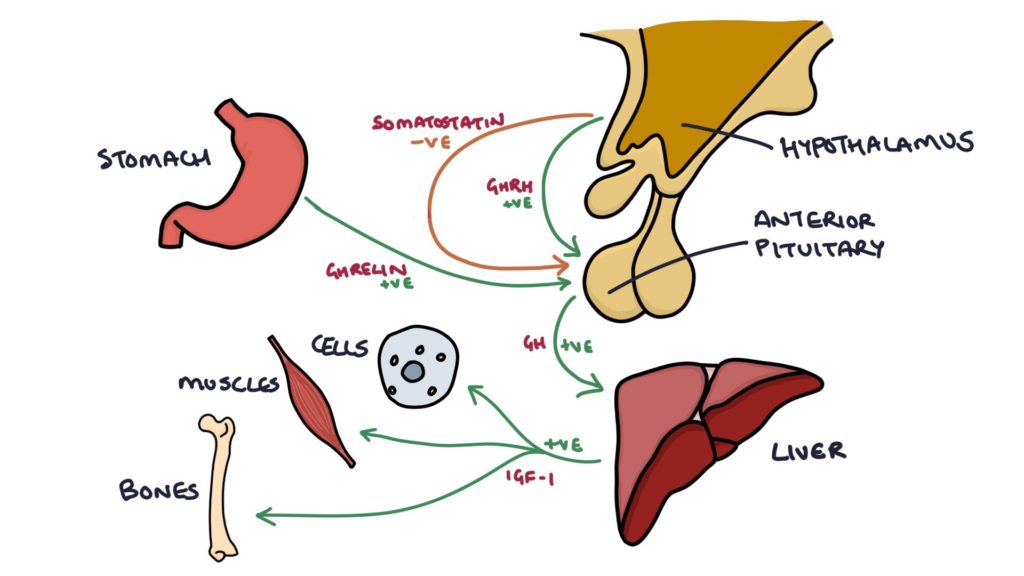
The Parathyroid Axis
Parathyroid hormone (PTH) is released from the four parathyroid glands (situated at the four corners of the thyroid gland) in response to a low calcium level in the blood. The role of PTH is to increase serum calcium concentration.
PTH increases the activity and number of osteoclasts in bone, causing reabsorption of calcium from the bone into the blood, increasing serum calcium concentration.
PTH also stimulates calcium reabsorption in the kidneys, meaning less calcium is excreted in the urine.
PTH also stimulates the kidneys to convert vitamin D3 into calcitriol, the active form of vitamin D. Vitamin D is a hormone that promotes calcium absorption from food in the intestine.
These three effects of PTH (increased calcium absorption from bone, the kidneys and the intestine) all help to increase the serum calcium. When the serum calcium level is high, it suppresses the release of PTH (via negative feedback), helping to reduce the serum calcium level.
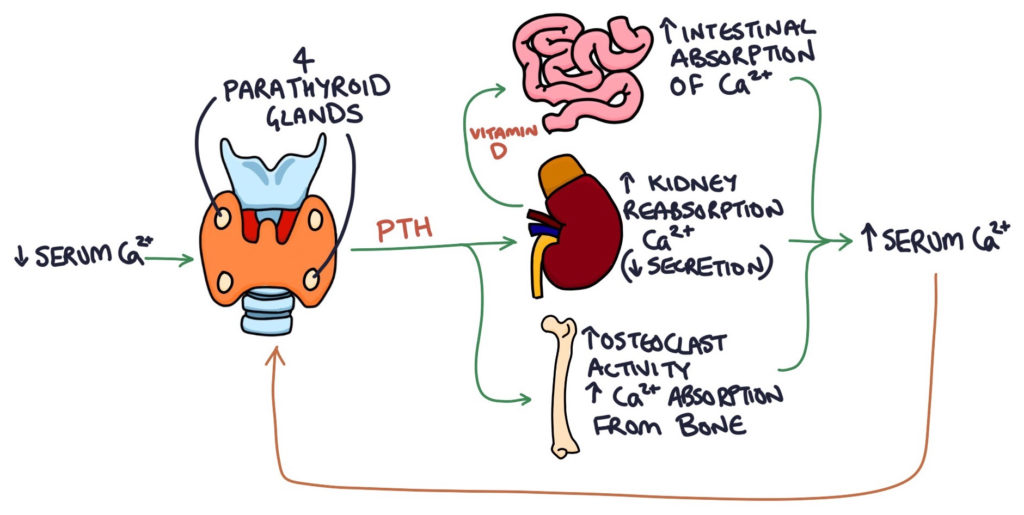
The Renin-Angiotensin-Aldosterone System
Renin is an enzyme secreted by the juxtaglomerular cells in the afferent (and some in the efferent) arterioles in the kidney. They sense the blood pressure in these vessels. They secrete more renin in response to low blood pressure and less renin in response to high blood pressure. Renin acts to convert angiotensinogen (released by the liver) into angiotensin I. Angiotensin I converts to angiotensin II in the lungs with the help of an enzyme called angiotensin-converting enzyme (ACE).
Angiotensin II acts on blood vessels, causing vasoconstriction. Vasoconstriction increases blood pressure. Angiotensin II also stimulates the release of aldosterone from the adrenal glands, and contributes to cardiac remodelling by promoting hypertrophy of heart muscle cells (myocytes).
Aldosterone is a mineralocorticoid steroid hormone. It acts on the nephrons in the kidneys to:
- Increase sodium reabsorption from the distal tubule
- Increase potassium secretion from the distal tubule
- Increase hydrogen secretion from the collecting ducts
When sodium is reabsorbed in the kidneys, water follows it by osmosis. This leads to increased intravascular volume and, subsequently, blood pressure.
TOM TIP: Understanding the renin-angiotensin-aldosterone system is essential to understanding the mechanism of action of ACE inhibitors and angiotensin II receptor blockers. By blocking the action of angiotensin-converting enzyme or angiotensin II receptors, they reduce the activity of angiotensin II, reducing vasoconstriction, cardiac remodelling and the secretion of aldosterone. Reduced aldosterone leads to reduced sodium reabsorption in the kidneys and less water retention. However, the reduced potassium secretion means these medications can cause hyperkalaemia (raised potassium).
Last updated March 2023
Now, head over to members.zerotofinals.com and test your knowledge of this content. Testing yourself helps identify what you missed and strengthens your understanding and retention.

